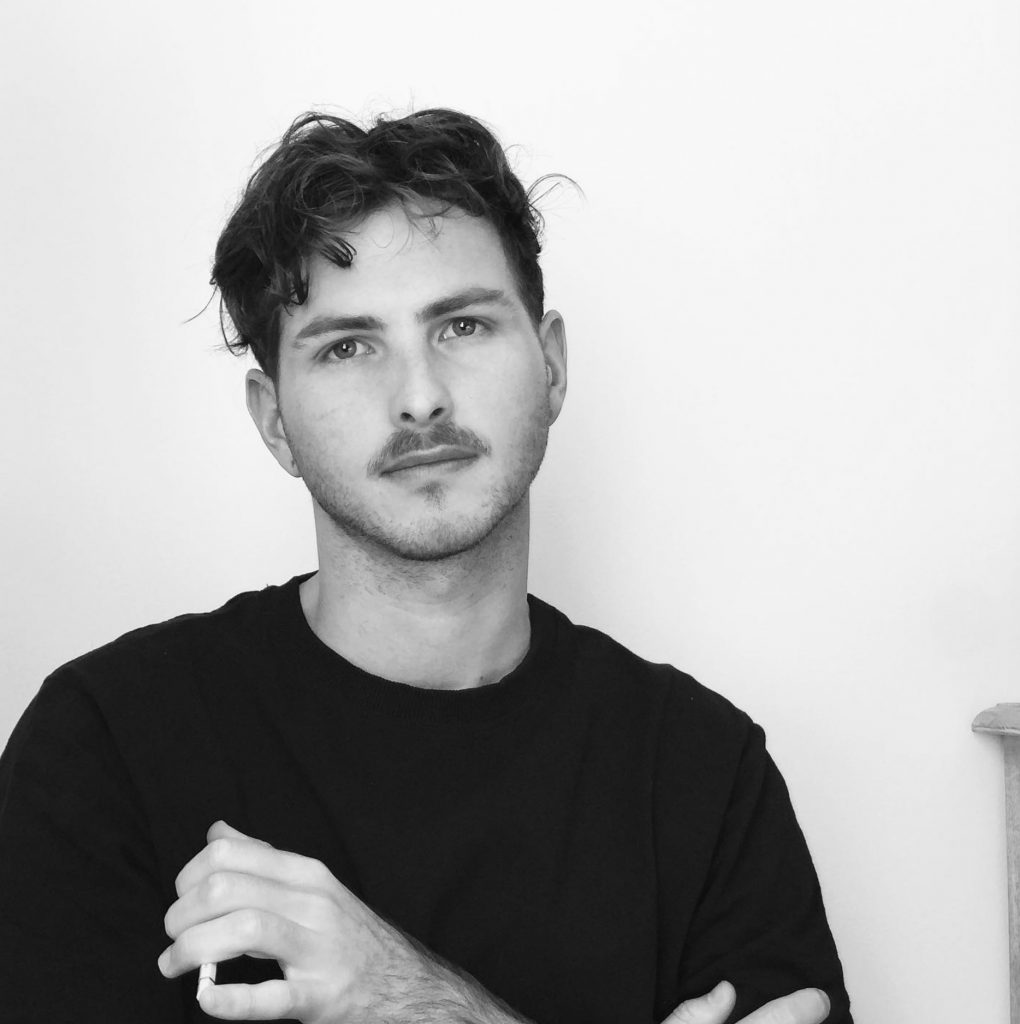“Progress was in the horizon of existences (…) It was in plastic and Formica, antibiotics (…) You have to be of your time, they said at will, as a proof of intelligence and open-mindedness.” – “Les Années” Annie Ernaux (translated can be improved)
Unifying the meticulous precision of a product designer and the grace and excellence of an Italian high renaissance painter, in his self-acclaimed quest of generating beautiful objects, Jean Bosphore aims to arouse in the mind of his viewer the deeply paradoxical combination of Man and the Machine. Bringing together duality in visual unity as if they were one.
The Man of Jean Bosphore is one merging with his synthetic environment, a plastic perfect shell of himself but just as hollow, dancing in retro-futuristic interiors that recall the ones of the post-modern design pioneers such as Marc Held or Steen Ostergaard, in a constant state of escapism from what he has left behind beyond the dark. He can be described as what Andy Warhol called a Pop person, “(…) he is like a vacuum that eats up everything, he’s made up from what he’s seen. And that’s why people are really becoming plastic; they are just fed things and are formed …”. In the world of Jean Bosphore, man becomes produced, rather than birthed.
By positioning himself as not the painter but the creator, Jean Bosphore steps further outside the canvas, ‘raising the arrogant barrier between artist and the craftsman’ just as the modernist Bauhaus maestro, Walter Gropius stated in his 1919 manifesto.
Jean starts his creation prior to painting, by uniquely shaping each wooden panel, and goes further after the painting is perfected, by framing his works in a way that the painting is not bounded by the frame but involves it, and the frame is not external to the painting but becomes its continuation. Jean Bosphore’s artworks are not made to be seen, but to be touched and felt. They long to be engaged beyond vision. With each of his artworks being an infusion of wood, plastic, metal, and acrylics jean strives to create what was once referred to as a total work of art.
In his latest body of works, Jean takes a step further from his anatomical and inwards-looking explorations of the male body by situating them in an uneasy confrontation with their immediate environment and what is external to them. In “Noon Rendez-Vous”, plastic perfect dancing figures appear detached from themselves and one another, in an enclosed prefabricated capsule with curves and colors of what could be imagined to be the interior of a vehicle designed by the prominent inventor of bio-design, Luigi Colani.
A visually stimulating non-place, with its lack of depth on display in plain sight.
Locating the viewer in a rather unsettling angel, as if we are spectating and surveilling, Jean’s paintings tend to be anything but comforting. Formal orders of harmony and balance are played with to help the eye take a fresh look at these rather effortless compositions.
In his work ‘Tulipes Jaunes, 2022” – the viewer is simply faced with a bouquet of yellow tulips but with its “nature” being made of plastic, and it’s yellow opposed by its strongest complementaries.
It is this faculty of uniting contradictions and contrasts, both in the visual sense and imperceptible, that gives the works of Jean their brisk evoking power.
Unlike their aesthetic unfamiliarity, Jean’s work deeply engages with our contemporary struggles, taking a critical stance towards a dystopian future that is being foreseen, one that is visually striking but with the expense of over-consumption. Concurrently, Bosphore’s multi-sensory approach to producing objects of art, as refreshing as it is to the contemporary eye, is one that has been long practiced. One can envisage a parallel between one of his hand-sized miniature paintings on wood, with the portable altars used in the 16th-century Flanders.
About his work, Joan Bosphore explains: “From my first sketches to the hanging of a work, I try to think of an object (…) I like the idea that it can fit in one hand, that it has something accessible and modest. But also that the painting can easily be transported or stored, like an object. (…) Also, this format can make you think of a smartphone, or a tablet: I like the idea that my paintings are ultimately just an image.”
Tirajeh Farahani

